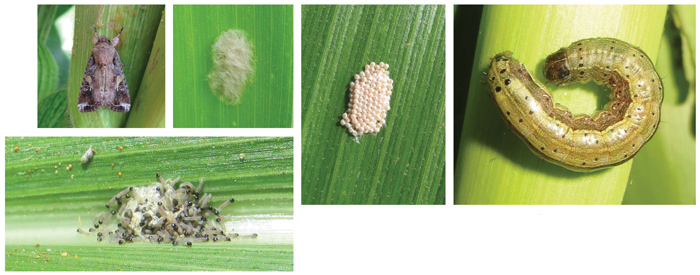July 2022
| ELRIZA THERON, MARKETING AND COMMUNICATIONS MANAGER, CROPLIFE |
It is imperative that farmers can identify pests to ensure early management with the right set of tools.
Fall armyworm (Spodoptera frugiperda) entered South Africa in 2016, with devastating results on their preferred host plants, maize and sweetcorn.
They are active during dusk and dawn, and mostly hide in plant whorls or between leaf sheets during the day. Eggs are laid in parcels that vary from 50 to 300 eggs and are covered with scales and hairs from the female moth’s body. The first few parcels are fluffy and completely covered, compared to later parcels that might be naked or with only a few scales.
After two to three days, most of the eggs hatch almost simultaneously. Fall armyworm’s lifecycle is temperature dependant and is completed in a shorter timespan at higher temperatures, which in South Africa varies between 24 to 40 days.
The initial infestation often goes unnoticed, as small larvae cause little plant damage, feeding mostly in the plant whorl and creating small ‘windows’. As the larvae grow, typical identification characteristics develop such as four dark dots on the eighth segment, a broad pale band and dark spots forming a trapezoid on each segment, an upside-down creamed colour Y-shape between the eyes and netlike pattern eyes.
Large larvae consume 80% of their total food intake in the last few days of development. When they move into the cob, poor gemination follows and severe damage up to hard-seed stage can occur.
Stacked GMO seeds, seed treatment and various registered chemical control options are available to manage fall armyworm. Scouting for moths and monitoring with pheromone traps can determine early moth flights, indicating infestations and the size thereof.
Field inspections every three to four days are crucial to identify egg parcels, small larvae or ‘window’ damage. When these are identified, a producer should act fast because mature larvae are more difficult to control, especially once they have moved into the cob.
For more information, visit www.croplife.co.za/KnowYourPest_FAW.

Signs that indicate the presence of fall armyworm on maize.
Publication: July 2022
Section: Pula/Imvula